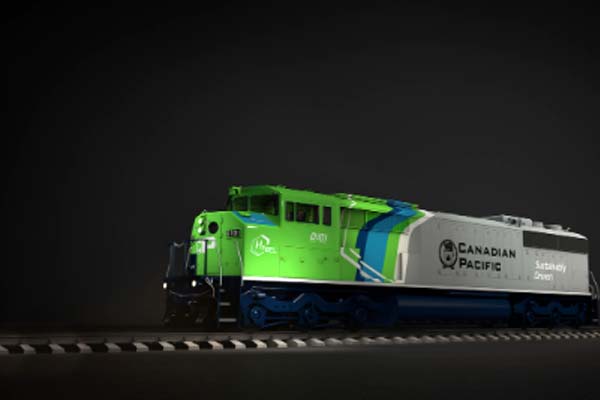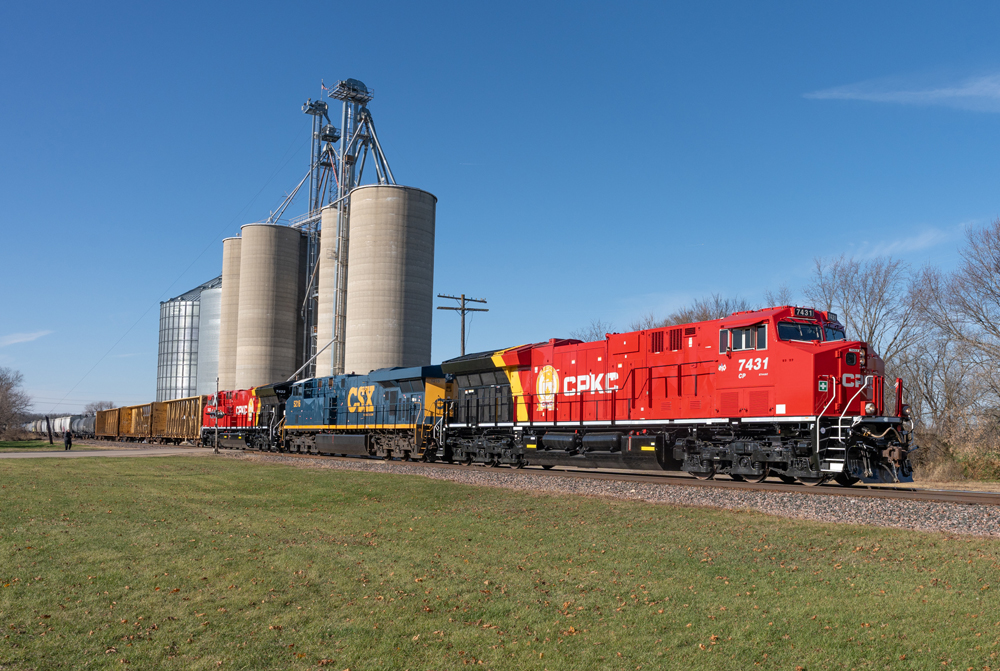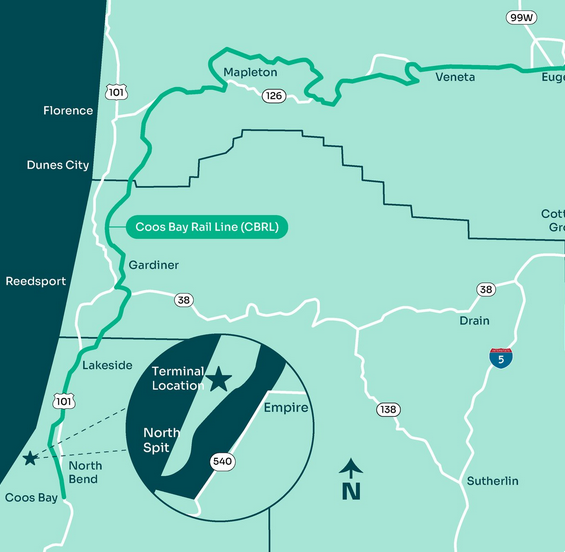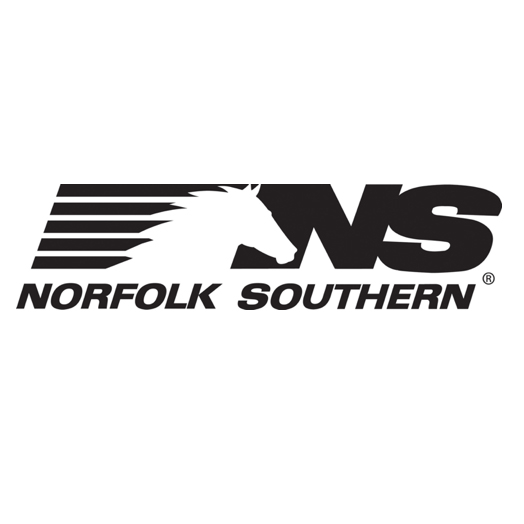
CALGARY, Alberta – Canadian Pacific has shared an image of its forthcoming hydrogen-powered locomotive. It shows an EMD cowl-style locomotive in a green, blue, white, and gray paint scheme.
According to the railroad’s sustainability website, the locomotive, known as “H2 0EL” for Hydrogen – Zero Emissions Locomotive, will be prepped for its official painting and launch. Each design element of the locomotive articulates the effect of this project. The blue and green paint colors represent sustainability, water, and technology. The H2 0EL wordmark features angled typography to symbolize movement and progress in action.
“This is a globally significant project that positions CP at the leading edge of decarbonizing the freight transportation sector,” President and CEO Keith Creel says. “CP will continue to focus on finding innovative solutions to transform our operations and implement our Climate Strategy, positioning CP and our industry as leaders for a sustainable future.”
CP has previously tested lower-emission locomotives using biofuels and compressed natural gas, as well as battery-powered units. Virtually all freight locomotives in North America are diesel-powered, representing railroading’s most significant source of greenhouse gas emissions.
The railroad expects the unit to begin operation in 2022.














Least we forget, “You get Noting for Nothing”! In other words, the pure energy needed to move a train, has to be produced somehow. The energy derived from wind power and solar, is nothing like that derived from Coal or Nuclear. Yes, they do pollute and dangerous, but with our population alway growing, we need even more energy.
How do they produce the hydrogen? Electrolysis? With power from a gas- or coal-fired power plant?
German Zeppelins used hydrogen as the lifting gas. Yes, the US would not sell helium to the Germans. Hindenburg (LZ-129) used Maybach diesels for propulsion.
USS Los Angeles (ZR-3) was built by Zeppelin as LZ-126 and was converted to helium as the lifting gas upon transfer to the US Navy.
Is the source of the hydrogen carbon neutral?
Likely not, but that’s another detail entirely. Battery-powered cars are not carbon neutral at all, yet they are still promoted as the future. Hydrogen is usually sourced as a byproduct of fossil fuel extraction, but we can also use electricity to produce hydrogen (and oxygen) by splitting water molecules.
Natural gas is the most common source of hydrogen today, which unfortunately is going through a major price bump (300%). Hydrogen can be produced from other fossil forms through the use of various catalysts and heat treatments.
The use of electrolysis to separate H2 from its O counterpart in water (like in seawater) is unfortunately very inefficient and not pushed by many simply because of the costs compared to what you get.
It may work in your high school chem lab, but it doesn’t scale well (at least not yet).
Yes, battery powered cars and locomotives are not carbon neutral unless they are charged by wind or solar generated electricity. Nevertheless, my Prius uses half the fossil fuels of a similar car powered only by gasoline. A battery powered locomotive in tandem with diesels (a multi-unit hybrid) will reduce the use of diesel fuel significantly.
Yes, Canada has an official “Hydrogen Strategy” that sets forth utilizing “green hydrogen” produced overnight from off peak hydro-electric power and “blue hydrogen” from oil/natural gas fields in Alberta where the hydrogen is extracted by pumping steam underground, but the carbon is returned back underground to the oil/gas reservoir. In Germany off-peak wind power is being used to produce the hydrogen for its new fuel-cell regional trainsets.
Looking forward to seeing the results of distance testing, how far between refueling.
Like the FEC locomotives that utilize LNG, the locomotive will likely be able to use a “tender” tank car
Remember, Count Von Zepplin, thought since he was unable to buy Helium; Hydrogen gas a good substitute to use in his Hindenburg ?
but canadian pacific, diesel locomotives don’t pollute much of the air as automobiles do
Nice paint scheme I’ll say. Going to be interesting to see how well this engine performs out on the rails. The locomotive apparently looks to originally be an SD40-2F that they reacquired from Central Maine & Quebec.
It is. It’s former CP Red Barn/CMQ Blue Barn (now CP Green Barn?) SD40-2F #9024